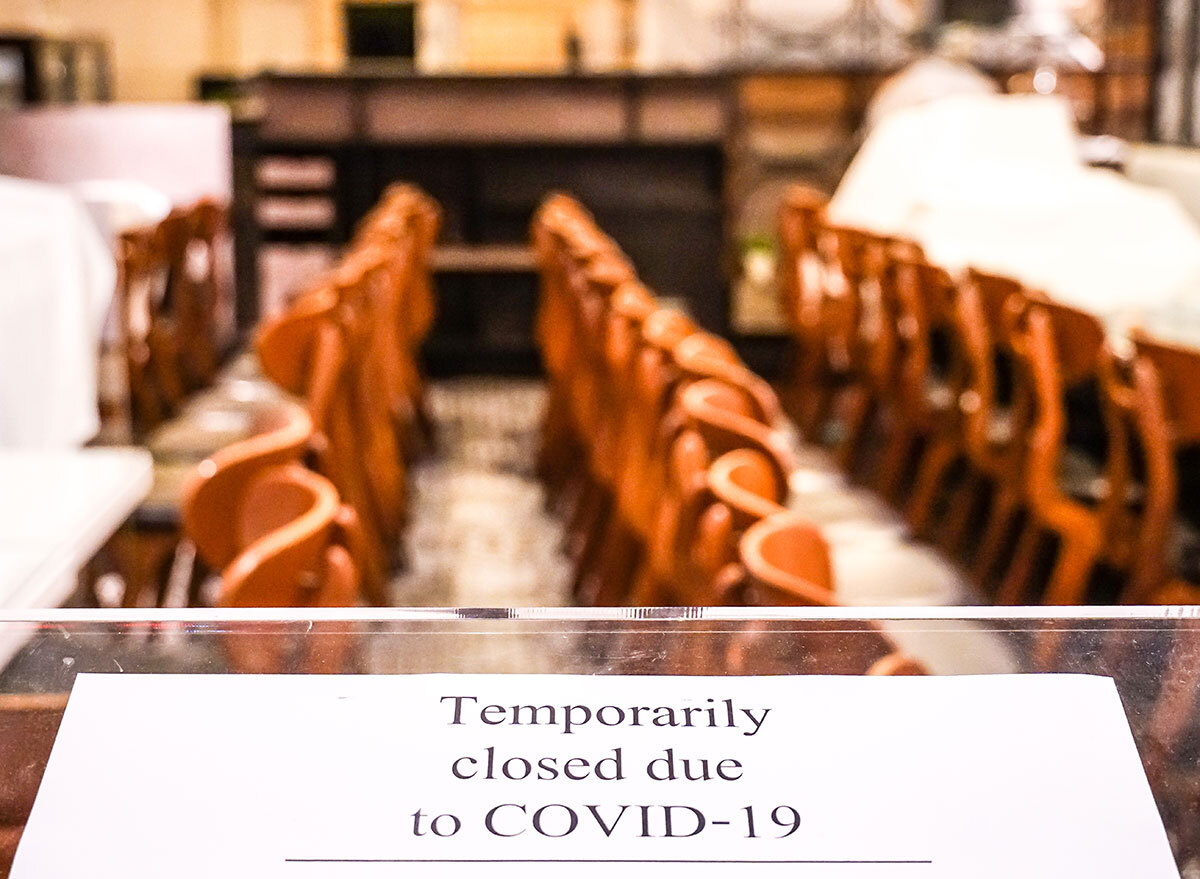These Are the 11 States Where COVID Is Surging Right Now
Omicron subvariants are also still driving up cases on a national level.
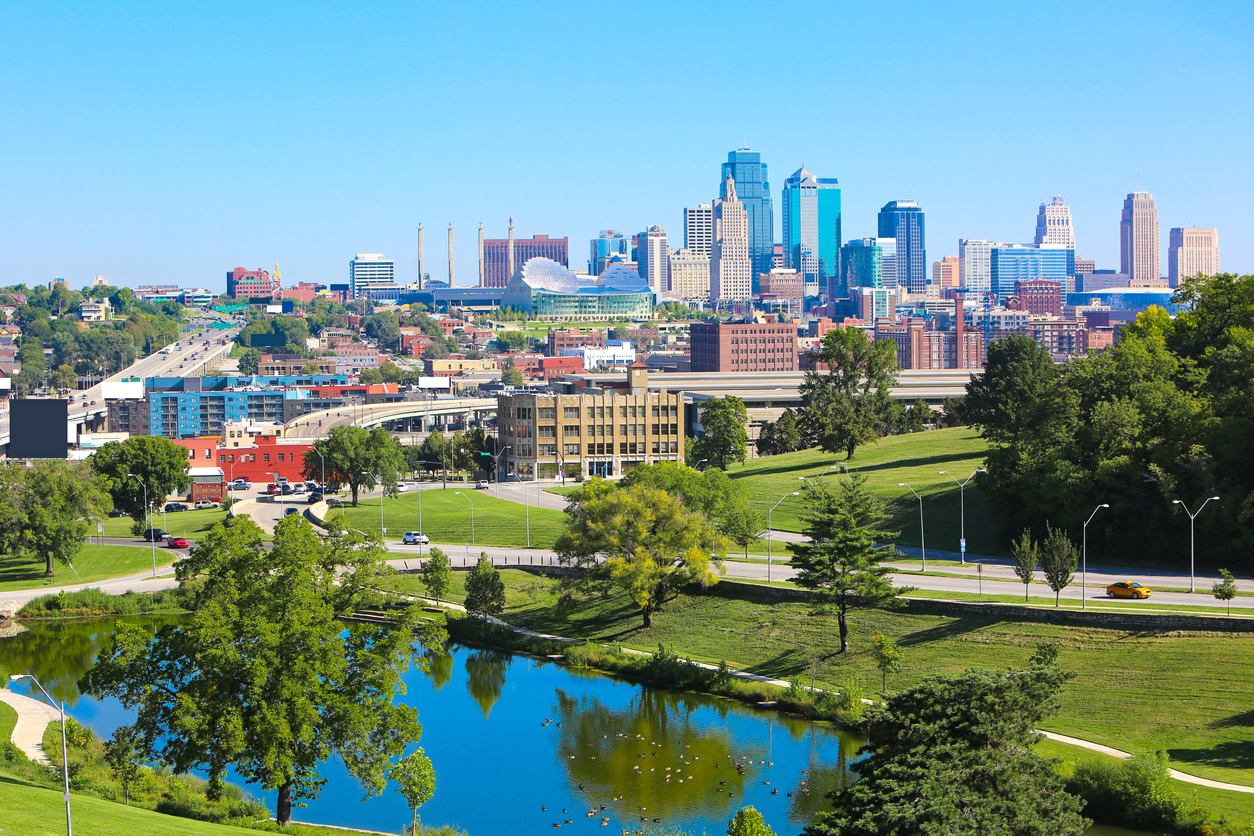
Despite a deep public urge to move on from the pandemic once and for all, COVID-19 continues to prove that it hasn't finished spreading through the population. The latest Omicron subvariant has put the days of declining infections firmly in the past just as the U.S. marks the one-millionth death from the virus. But certain regions are feeling particularly sharp rises in cases, with surging COVID numbers in some states having already surpassed the heights recorded during the Delta surge last summer, The New York Times reports.
The national daily new case average continued its upward trend this week, increasing 37 percent over the past seven days to 29 per 100,000 people, according to data from The Washington Post. Hospitalizations from the virus were also up 18 percent over the same period to 7 per capita.
The latest rise has led officials in some states to urge the public to consider wearing face coverings in indoor public spaces once again.
"We are not at the point of mandating masks," New York City Mayor Eric Adams said on May 16, who clarified that hospitals were still able to manage the flow of patients, perThe Times. "We are not at the point of doing anything other than urging New Yorkers, while you are indoors in large settings, social settings, wear your masks. If there comes a time that our hospitals are in a state of emergency, or we're trending that way, and my doctors that run the hospitals tell me this is what we need to do, I'm going to listen to them."
Read on to see which states have experienced COVID surges of 50 percent or more over the past week as of May 17, according to data from The Washington Post.
READ THIS NEXT: This Is How Long Your Omicron Symptoms Will Last, Doctors Say.
11 West Virginia

- New cases in the last seven days:21 cases per 100,000 people
- Percent increase in the last seven days:50 percent
Even with COVID cases on the rise in West Virginia, local officials cautioned that the latest spike fueled by Omicron subvariants was likely higher than numbers suggested.
"We know this is most likely an underrepresentation of the true number of people infected because people either aren't getting tested or are testing at home," Clay Marsh, MD, the state's coronavirus response adviser, said during a May 16 briefing, per local outlet MetroNews. "We do see another surge that is happening both in the United States and in West Virginia. We see that this variant is continuing to change, to mutate, and those changes allow the virus to escape our immune system more easily."
10 Delaware

- New cases in the last seven days:51 cases per 100,000 people
- Percent increase in the last seven days:50 percent
Rising COVID numbers in Delaware this week include Gov. John Carney, who announced on May 16 that he had tested positive for the virus. All three of the state's counties were also listed as the "yellow" level, which denotes a medium community spread risk, according to COVID Act Now.
9 Nebraska
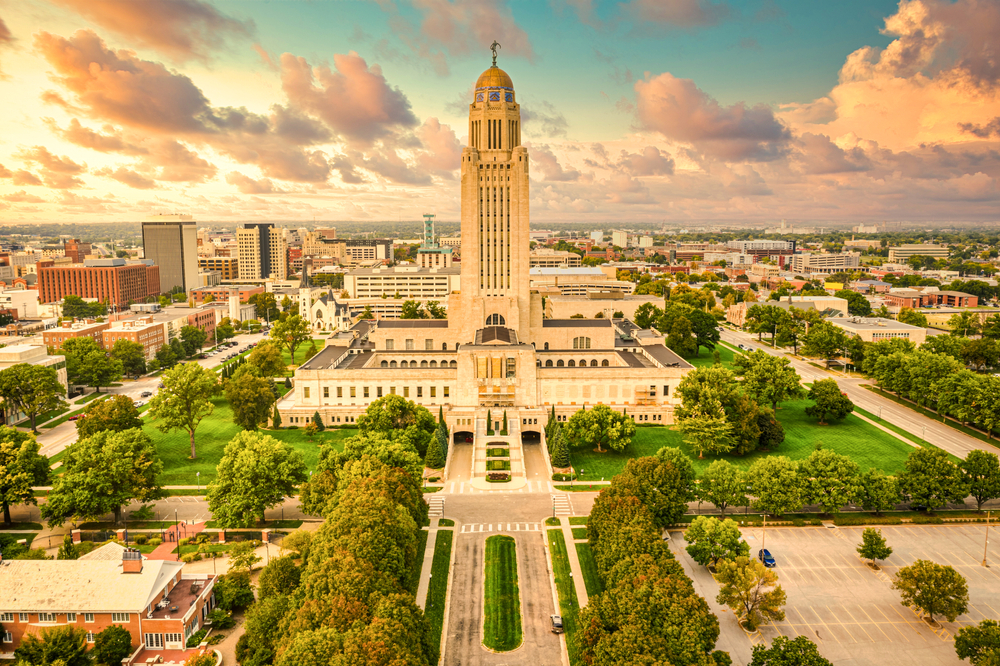
- New cases in the last seven days:11 cases per 100,000 people
- Percent increase in the last seven days:53 percent
According to state health data, as of May 16, Nebraska saw roughly 1,500 new COVID-19 cases added to its total, bringing the figure back to its highest level since mid-February, the Omaha World-Herald reports. Genetic sequencing also shows that 89 percent of positive test results were caused by the highly contagious BA.2 Omicron subvariant.
RELATED: For more up-to-date information, sign up for our daily newsletter.
8 Alabama
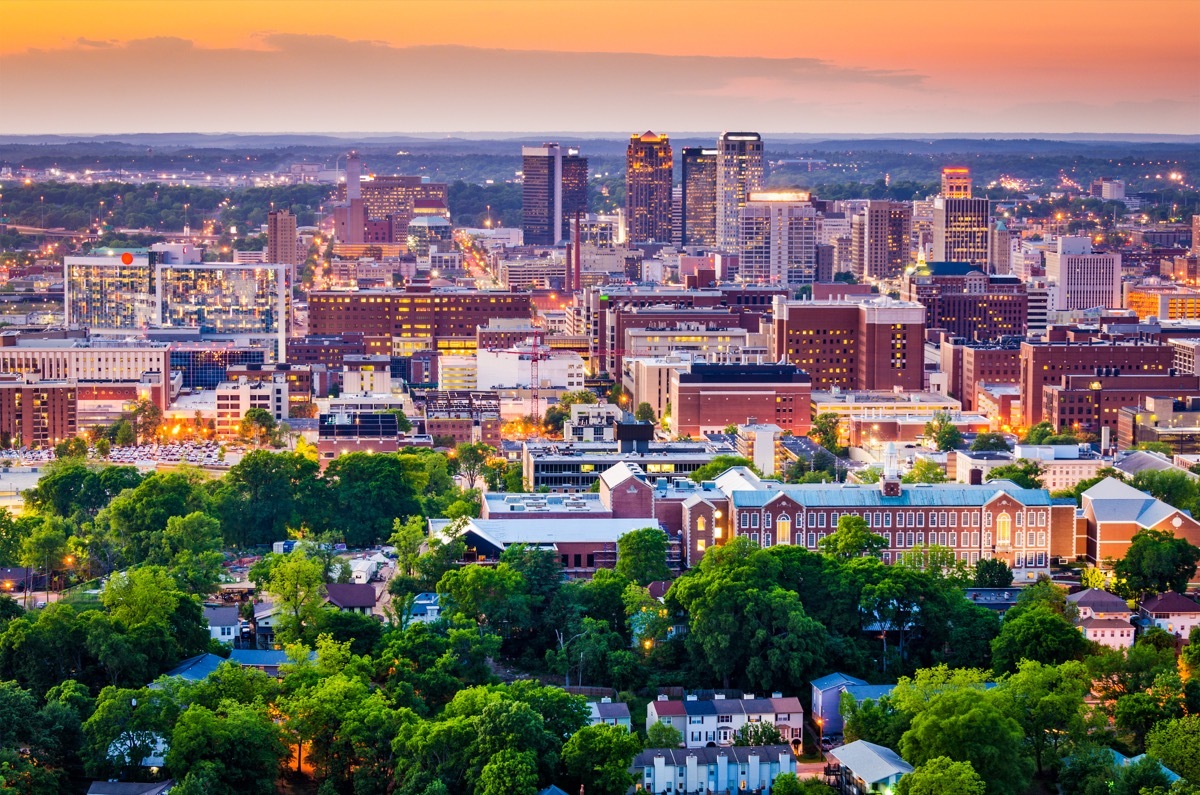
- New cases in the last seven days:8 cases per 100,000 people
- Percent increase in the last seven days:54 percent
While figures remain much lower than their all-time highest points recorded during the Omicron surge this past winter, Alabama is once again seeing cases rise at a significant rate. Local health officials also pointed out that at-home testing likely meant actual infection rates were much higher than current figures suggest.
"We know that BA.2 accounts for the majority of the specimens that we're currently typing, according to the CDC, and that's different from the original Omicron," Wes Stubblefield, MD, from the Alabama Department of Public Health, told the Montgomery Advertiser. "Plus, the Omicron spike happened three to four months ago, and so that immunity that was gained from the Omicron wave that happened is probably starting to deteriorate in some people."
7 Pennsylvania

- New cases in the last seven days:27 cases per 100,000 people
- Percent increase in the last seven days:68 percent
According to COVID Act Now, as of May 17, eight counties in Pennsylvania were listed as the "orange" level denoting a high risk of community spread. The statewide positive test rate was 13.9 percent.
6 Mississippi
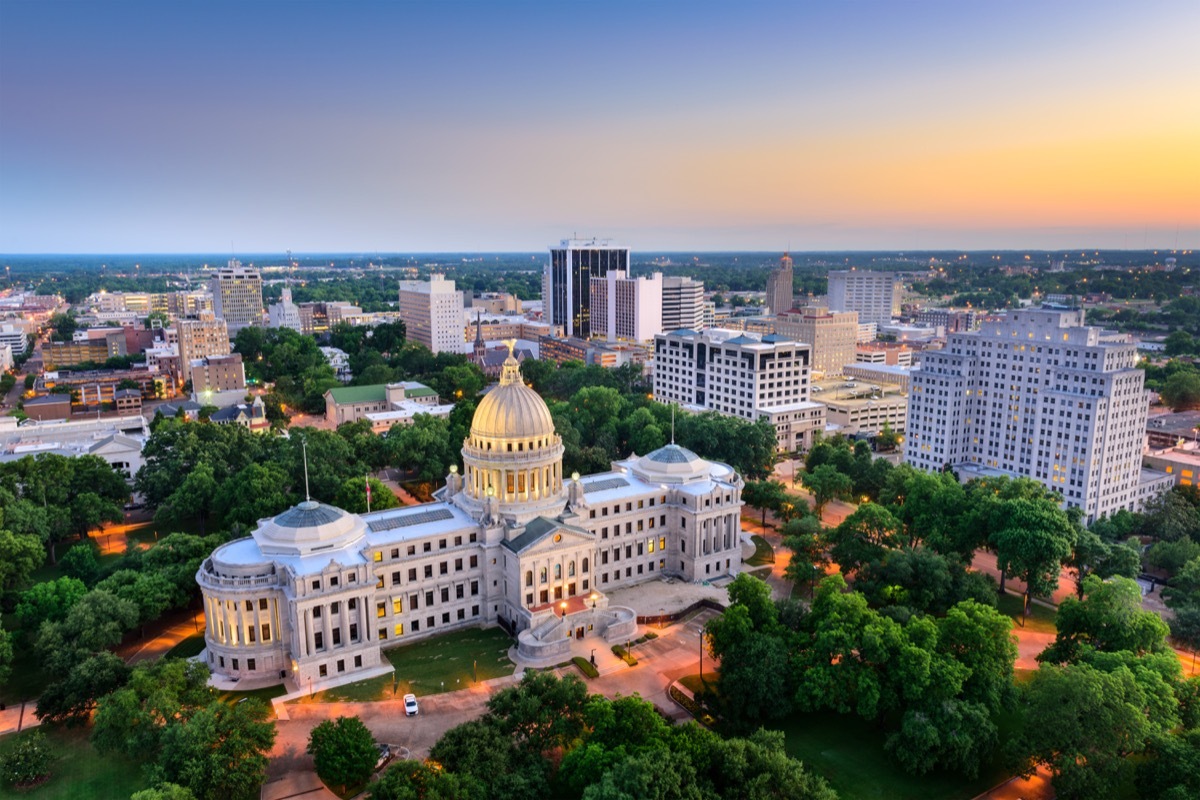
- New cases in the last seven days:14 cases per 100,000 people
- Percent increase in the last seven days:71 percent
The last two weeks in Mississippi have seen a rise in COVID cases followed by a slight uptick in hospitalizations of four percent, according to data from The Times. But even though all but two of the state's counties remain in the lowest "green" community spread risk zone, local health officials still urged caution.
"We do have transmission, there is no doubt," Liz Sharlot, communications director at the state's Department of Health, told Mississippi Today. "COVID is still here, and our best advice is to get vaccinated if you have not, get your booster and second booster if you are eligible. Our concern remains with elderly folks that don't get the second booster. It does make a difference."
5 Kentucky

- New cases in the last seven days:24 cases per 100,000 people
- Percent increase in the last seven days:82 percent
On May 16, Kentucky reported 6,443 new COVID cases from over the previous week, state health officials reported. The state's positive test rate was also 9.35 percent.
READ THIS NEXT: More Than 50 Percent of People Who Get COVID Have This in Common, Study Says.
4 Connecticut

- New cases in the last seven days:77 cases per 100,000 people
- Percent increase in the last seven days:84 percent
According to a weekly update from Gov. Ned Lamont, the positive test rate in Connecticut was 13.05 percent as of May 16. The number of hospitalizations from the virus statewide also increased by 55 over the past week to 331.
3 Colorado

- New cases in the last seven days:36 cases per 100,000 people
- Percent increase in the last seven days:90 percent
Five Colorado counties—Weld, Larimer, Boulder, Arapaho, and Mineral—were all listed at the "yellow" risk designation for medium risk of community spread as of May 17, according to COVID Act Now. The statewide positive test rate stands at 8.2 percent.ae0fcc31ae342fd3a1346ebb1f342fcb
2 Florida

- New cases in the last seven days:37 cases per 100,000 people
- Percent increase in the last seven days:97 percent
COVID cases are up in Florida—especially in the state's most populous county, Miami-Dade, which is listed at the medium community spread risk level, according to COVID Act Now. During an appearance on May 16, former White House coronavirus response coordinator Deborah Birx, MD, predicted that the state would see a spike in infections over the summer, the Palm Beach Post reports.
"It's early. Give it a few weeks. Hospitalizations grow linearly, then become exponential," Birx warned in response to claims that cases caused by the Omicron variant are milder.
1 Missouri

- New cases in the last seven days:12 cases per 100,000 people
- Percent increase in the last seven days:115 percent
Missouri has seen the most significant rise in COVID cases compared to any other state over the past seven days. Data also shows that hospitalizations are also heading up in the state, increasing 18 percent over the past two weeks to a daily average of 428 as of May 16, according to The Times.
READ THIS NEXT: This One Symptom Could Be Your First Sign of Omicron, Doctors Warn.
